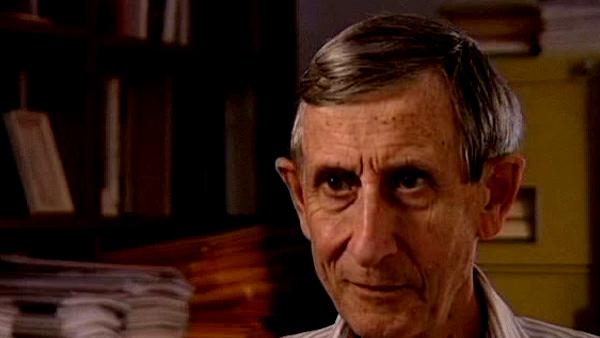So I was actually still working in pure mathematics during that year, and during that year I did my second major piece of mathematics which was because I got to know Davenport. So the year 1945 to '46 was really the high point of my career as a pure mathematician, when I was at Imperial College, because I spent a lot of the time at Birkbeck College.
[Q] Which was where Davenport was?
Which was not where Davenport was, but was where Davenport and I could meet, because he was professor at University College which had been more or less bombed out.
[Q] I see, OK, and Birkbeck is nearby.
And Birkbeck was a convenient meeting place and so we had a lot of seminars at Birkbeck, and I became effectively a graduate student working with Davenport. And he gave me an excellent problem to do, which was the Minkowski conjecture in four dimensions, which was my second main piece of pure mathematics.
[Q] And the Minkowski conjecture in one and two dimension is... are?
Well it was proof by... in one dimension is trivial and what it says... the conjecture says if you have a inhomogeneous linear form, that means just a form of the type, sort of, a1x1 + a2x2 + a3x3...+ anxn + b, so it's a linear expression in n variables with a constant term b at the end - and you have n such forms and you multiply them all together and consider what values that can take for integer values of the x's; then the theorem says, or the conjecture says - it's still not proved in general - the conjecture says that the minimum value that that takes for integer values of the x's is not greater than 2-n times the determinant of the coefficients. And it's a nice theorem, but it's of no importance whatever. The only reason it's famous is because it was the work of Minkowski, I would say. I mean, of course Minkowski was famous for other reasons and it happened to be his conjecture. Anyway, so he proved it for two dimensions, and then Remak, who is a German mathematician, proved it in three dimensions, and there it stuck for about 20 years, and so it was a famous unsolved problem. And so Davenport said, 'Why don't you try doing it for four dimensions?' and so I did it during the year at Imperial College. And that was a lovely piece of work again. It was in a certain way my most sophisticated piece of work.
[Q] And the reason that you call it sophisticated?
Well, because it used topology as well as algebra, and it brought together several different branches of mathematics, so one of the main tools was actually algebraic topology, which nobody before had managed to use in connection with number theory. So it was a more original proof than the one that I had done for the alpha-beta theorem. And it was, in fact, a kind of intellectual tour de force. I mean the proof was much more exciting than the theorem.






